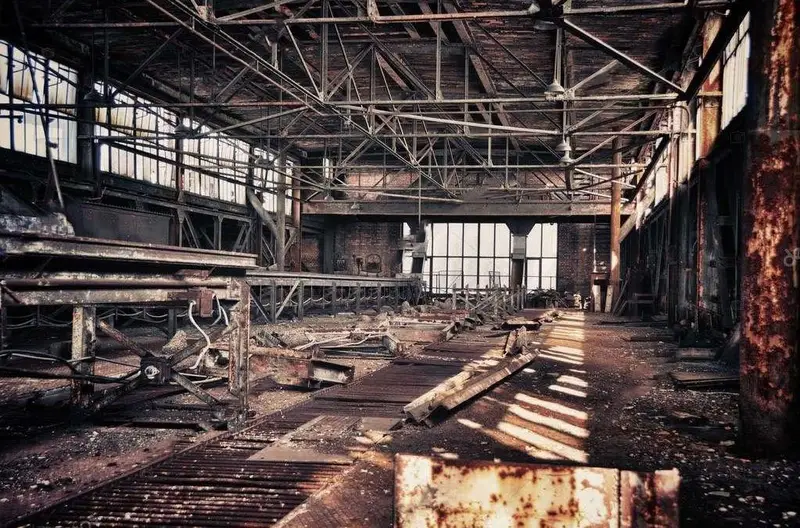Dilapidations
As a landlord or tenant of commercial property, you need to ensure that the condition of the building you lease is maintained throughout the lease period.


Comprehensive Dilapidations Surveys & Lease Compliance
As a landlord or tenant, maintaining your commercial property’s condition is crucial. Lease breaches can lead to dilapidations, requiring professional assessment.
We provide dilapidations surveys to identify lease breaches & recommend necessary repairs, helping you stay compliant and protect your interests.
Our Chartered Surveyors specialize in dilapidation claims, preparing Schedules of Dilapidations that include:
- Key documents referenced
- Relevant lease clauses
- Identified breaches
- Required remedies
Fair & Transparent Costings
Understanding the costs involved in the dilapidations process is crucial.
At KEYS, we ensure that our Schedule of Dilapidations is priced appropriately based on the extent of damages.
In commercial dilapidations, repair conditions significantly impact costs, and interim dilapidations may require fair pricing agreements.
Our commitment to transparency ensures all parties are fully informed about the financial aspects of the process.


Feel confident in Reliable Costings & Detailed Reporting
Our Schedule of Dilapidations is priced using reliable industry sources, including invoices from remedial works, competitive tenders, BCIS Online pricing books, and recent tender data.
We meticulously record & present costs in a clear, accessible format, ensuring full transparency for clients, advisers, and tribunals.
Whether providing strategic advice across the UK or representing clients in London & the Southeast, we prioritize trust, clarity, and the best possible outcome for our clients.
Trust us to Negotiate a fair settlement - on your behalf
Negotiating dilapidations can be challenging for both landlords and tenants.
A schedule of conditions helps track the property’s state, while a dilapidations report outlines the landlord’s claim for restoration. However, negotiations should be balanced, with both parties heard.
To reach a fair settlement agreement, we advocate for regular meetings during negotiations, allowing parties to clarify differences and agree on aspects of the claim.
Open dialogue ensures a mutually beneficial solution, making the process smoother and more transparent.


Proactive Interim Dilapidations Management
We help clients maintain positive landlord-tenant relationships.
Fulfilling lease obligations & maintaining a leasehold property requires careful attention to dilapidations.
We take a proactive approach, guiding clients through their rights & responsibilities.
Our expert team listens to each client’s unique situation, offering professional advice to ensure fair & reasonable cost coverage for property restoration, minimizing disputes, and ensuring legal protection.
Strategic Legal guidance
We help you navigate complex lease obligations.
Certain limitations & regulations apply, such as the Leasehold Property (Repairs) Act 1938, which covers leases of 7 years or more with at least 3 years remaining.
A Landlord pursuing a dilapidations claim during the lease term may seek:
- Damages (based on property’s diminished value)
- Forfeiture (lease termination)
- Specific performance (court orders for repairs)
- Entry rights to carry out necessary work
We ensure that our clients fully understand these legal aspects, offering strategic guidance to navigate complex lease obligations effectively…


Effective Lease Termination
When a lease ends, landlords often face dilapidation issues.
Creating a Schedule of Conditions at the lease’s start helps assess the property’s condition.
At end of the tenancy, a Terminal Schedule of Dilapidations is prepared, outlining lease breaches & cost liabilities.
Since damages are the only remedy, a precise assessment is crucial in determining compensation. To ensure transparency & efficiency, summarizing costs on a single sheet at the beginning or end of the schedule simplifies the process for both landlords and tenants.
Safeguard your Position on wear & Tear
If you’re a landlord & have recently leased out a building, it’s important to carry out a schedule of conditions at the outset.
This involves a chartered building surveyor inspecting the building & carefully documenting any issues, both big & small.
This provides valuable information on the state of the building, allowing you to understand what repairs or restorative work needs to be carried out at the end of the lease.
A “Schedule of Conditions” can reveal everything from minor issues, like wall brackets that need to be removed, to larger repairs, such as full wall or roof replacements. It’s truly an essential step for a professional landlord like you to safeguard your position.

Frequently Asked Questions
What are dilapidations in a commercial lease?
Dilapidations refer to breaches of a tenant’s lease obligations regarding the condition of the property, typically at lease end. The landlord can claim for the cost of repairs, reinstatement, and loss of rent if the property is not returned in the agreed condition. It means that tenants must ensure the property meets lease conditions, or they may face financial claims from the landlord for repairs or compensation.
What is a Schedule of Dilapidations?
A formal document outlining the disrepair and reinstatement obligations the tenant has failed to meet. It is typically issued before or after the lease ends. Tenants may dispute the items listed, especially if they believe the claims exceed their actual obligations.
When should a Schedule of Dilapidations be served?
A schedule can be served during the lease term (Interim Schedule) or at lease expiry (Terminal Schedule). The goal is to prompt the tenant to address issues or provide a claim for damages. If served during the lease, tenants may have an opportunity to remedy issues before lease end, potentially avoiding financial claims.
What is the difference between repairs and reinstatement?
Repairs involve fixing damage or wear and tear, whereas reinstatement requires the tenant to return the property to its original leased condition (e.g., removing alterations). Tenants should check lease clauses carefully to distinguish between reasonable repair obligations and extensive reinstatement demands.
How can tenants minimise dilapidation costs?
Conduct a Schedule of Condition at lease commencement, carry out repairs during the lease, and negotiate terms before vacating to minimise liability.
Can a landlord claim for loss of rent due to dilapidations?
Yes, if the disrepair delays re-letting, a landlord can claim loss of rent and business rates. Although tenants can challenge claims if they’re not reasonable and justifiable under the Dilapidations Protocol.
What is the Dilapidations Protocol, and why does it matter?
A formal process in the UK ensuring fair handling of dilapidations claims, requiring landlords to provide proper justification for claims. The protocol protects tenants from inflated claims and ensures fair assessment of repair costs. Tenants should engage professionals to challenge unreasonable demands.
Can a tenant negotiate a dilapidations settlement?
Yes, settlements are common to avoid legal disputes. Landlords may accept a financial settlement instead of requiring actual repairs. Tenants can negotiate a lower settlement, particularly if the landlord has plans to refurbish or redevelop the premises.
